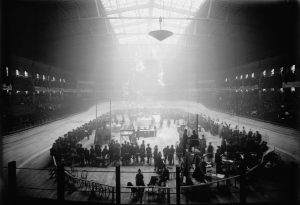From Horse Carriages to Hypercars: 200 Years of Transportation
Transportation is an essential aspect of human civilization, allowing us to travel from one place to another with ease and efficiency. Over the past 200 years, the evolution of transportation has been nothing short of remarkable. From the humble horse carriage to the awe-inspiring hypercars, we have come a long way in terms of technological advancements and innovations. Join me as we take a journey through time to explore the fascinating transformation of transportation from horse carriages to hypercars.
The Beginning: Horse Carriages
The earliest form of transportation can be traced back to the horse-drawn carriages, which were used to transport goods and people. These carriages were popular in Europe and were mainly used by the wealthy. The design and structure of these carriages varied, with some being open-topped and others having roofs. They were pulled by horses and required skilled drivers to maneuver through the narrow, cobbled streets of cities.
The Invention of Automobiles
The invention of the gasoline-powered automobile in the late 1800s marked a significant shift in transportation. Karl Benz, a German inventor, is credited with creating the first gasoline-powered car in 1885. This invention paved the way for the development of various types of vehicles, including trucks, buses, and motorcycles. Soon, automobiles became more affordable and accessible to the general public, leading to a boom in the automotive industry.
The Mass Production of Cars: The Ford Model T
In 1908, the Ford Model T was introduced, revolutionizing the automotive industry. This was the first car to be mass-produced on an assembly line, making it more affordable for the average person. It had a simple design, making it easy to maintain and repair, and was renowned for its reliability. The production of the Ford Model T laid the foundation for the modern-day assembly line and set the standard for mass production in the automobile industry.
From Steam to Gasoline and Electric: The Rise of Different Types of Cars
As the demand for automobiles increased, so did the need for diverse options. This led to the production of different types of cars, including steam-powered vehicles, electric cars, and hybrid cars. The steam-powered car, although not as efficient as the gasoline-powered ones, was popular during the early 1900s. However, it was soon replaced by gasoline-powered cars, which were more practical and reliable.
Electric cars, on the other hand, gained popularity in the early 2000s due to their eco-friendliness. With the increase in environmental awareness, more and more people are opting for electric cars, making them a viable option for the future of transportation. Hybrid cars, which use both gasoline and electric power, are also gaining popularity as a more sustainable option for urban transportation.
The Advent of High-Speed Trains: A Game Changer in Transportation
In addition to automobiles, the transportation industry has also seen significant progress in rail transportation. The earliest form of trains was steam-powered and was introduced in the early 1800s. However, the emergence of high-speed trains revolutionized the industry in the late 20th century. These trains, which can travel at speeds of up to 300 km/h, allowed people to travel long distances in a fraction of the time it took before.
The Future of Transportation: Hypercars
As we move into a more technologically advanced era, the concept of transportation is constantly evolving. One such evolution is the advent of hypercars, which are ultra-high-performance cars designed for speed and efficiency. These cars use advanced technologies, such as electric power, to achieve incredible speeds and are a testament to human ingenuity. They are also environmentally friendly, making them a sustainable option for the future of transportation.
With companies like Tesla, Porsche, and Bugatti at the forefront of hypercar production, we can expect to see more groundbreaking innovations in the field of transportation. These cars are not only an engineering marvel but also a symbol of our progress as a society.
In Conclusion
From horse carriages to hypercars, the transportation industry has come a long way in the past 200 years. The various advancements and innovations have made our lives easier, more convenient, and more connected. With the constant progress and development in this field, the future of transportation looks bright. Who knows what fascinating modes of transportation we will see in the next 200 years? One thing is for sure; we can expect to be amazed and awed by the ongoing evolution of transportation.










